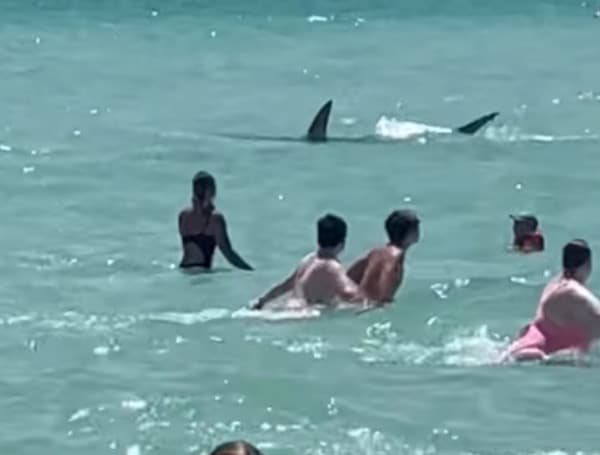
Shark attacks have long captivated the public’s attention, evoking a mix of fear and fascination. In recent years, however, there has been a concerning spike in deadly shark attacks, raising questions about the factors contributing to this increase.
2023 witnessed a significant increase in deadly unprovoked shark attacks, with a total of 10 documented cases worldwide
These incidents serve as a stark reminder of the potential dangers lurking beneath the ocean’s surface. While shark attacks are still relatively rare, the upward trend demands attention and further investigation.
Thanks to advancements in technology, organizations like OCEARCH have made significant strides in tracking sharks and collecting invaluable data. OCEARCH utilizes Smart Positioning and Temperature (SPOT) Tags, enabling real-time monitoring of shark movements.
Help support the Tampa Free Press by making any small donation by clicking here.
These tags “ping” whenever a shark’s fin breaks the water’s surface, providing researchers with crucial information about their behavior and migration patterns.
Keji: A Transatlantic Traveler
One remarkable example is Keji, a 9-foot-7, 578-pound great white shark. Keji was first tagged in September 2021 in Nova Scotia, Canada, and has since traversed vast distances along the eastern coast of the United States.
The recent ping recorded in the Gulf of Mexico highlights the elusive nature of these apex predators and their ability to cover extensive territories.
Jekyll’s Journey
Another noteworthy shark is Jekyll, an 8-foot-8, 395-pound great white.
Initially tagged in Jekyll Island, Georgia, in December 2022, Jekyll has also been detected in close proximity to Keji’s location. The overlapping paths of these two sharks demonstrate the interconnectedness of their migratory routes and the potential risks they pose to coastal regions.
On February 15, 2024, Jekyll was pinged, passing the Florida Keys and entering the Gulf of Mexico.
Florida: A Hotspot for Shark Attacks
When it comes to shark attacks, Florida has consistently ranked high on the list of hotspots. In 2023, the state recorded the highest number of shark bites globally. With its expansive coastline and diverse marine ecosystem, Florida provides an ideal habitat for various shark species, including the formidable great white.
Within Florida, the Florida Keys have emerged as a focal point for shark activity. Recent sightings of great white sharks near this archipelago have heightened concerns among locals and visitors alike. OCEARCH’s tracking data has revealed multiple pings in the waters surrounding the Florida Keys, indicating the presence of these apex predators.
While the increase in deadly shark attacks is undoubtedly alarming, it is essential to delve deeper into the underlying causes to develop effective preventive measures. Several factors contribute to the rise in these incidents, including:
– Environmental Changes
Environmental changes play a significant role in altering shark behavior and distribution. Rising water temperatures, changes in ocean currents, and fluctuations in prey availability can all impact the movement and feeding patterns of sharks. Understanding these ecological shifts is crucial in anticipating and mitigating potential risks.
Help support the Tampa Free Press by making any small donation by clicking here.
– Human Encroachment and Activities
As coastal populations continue to grow, human activities in marine environments have increased. Recreational water sports, fishing, and tourism all bring humans and sharks into closer proximity, increasing the chances of encounters. It is vital for individuals and communities to be educated on best practices for coexisting with these apex predators safely.
– Misidentification and Provocation
Shark attacks are often a result of mistaken identity or provoked behavior. Many incidents occur when sharks mistake humans for prey items, such as seals or sea lions.
Additionally, improper interactions, such as feeding or harassing sharks, can lead to defensive or aggressive responses. Enhancing public awareness and promoting responsible behavior can help minimize these risks.
Mitigating Future Risks
To address the rising concerns surrounding shark attacks, proactive measures must be taken to mitigate future risks. These strategies include:
– Education and Awareness Campaigns
Implementing comprehensive education and awareness campaigns is paramount in fostering understanding and respect for sharks. By dispelling misconceptions and promoting accurate information, individuals can make informed decisions when engaging with marine environments.
– Enhanced Monitoring and Research
Continued investment in shark monitoring and research programs is crucial for tracking their movements and behaviors accurately. By expanding our understanding of shark ecology and migration patterns, scientists can identify potential hotspots and develop proactive strategies to minimize risks.
– Implementing Protective Measures
Local authorities and organizations should collaborate to implement protective measures, such as shark nets, signage, and lifeguard training programs. These initiatives can enhance public safety and provide valuable support for beachgoers and water enthusiasts.
Help support the Tampa Free Press by making any small donation by clicking here.
Android Users, Click To Download The Tampa Free Press App And Never Miss A Story. Follow Us On Facebook and Twitter. Sign up for our free newsletter.




